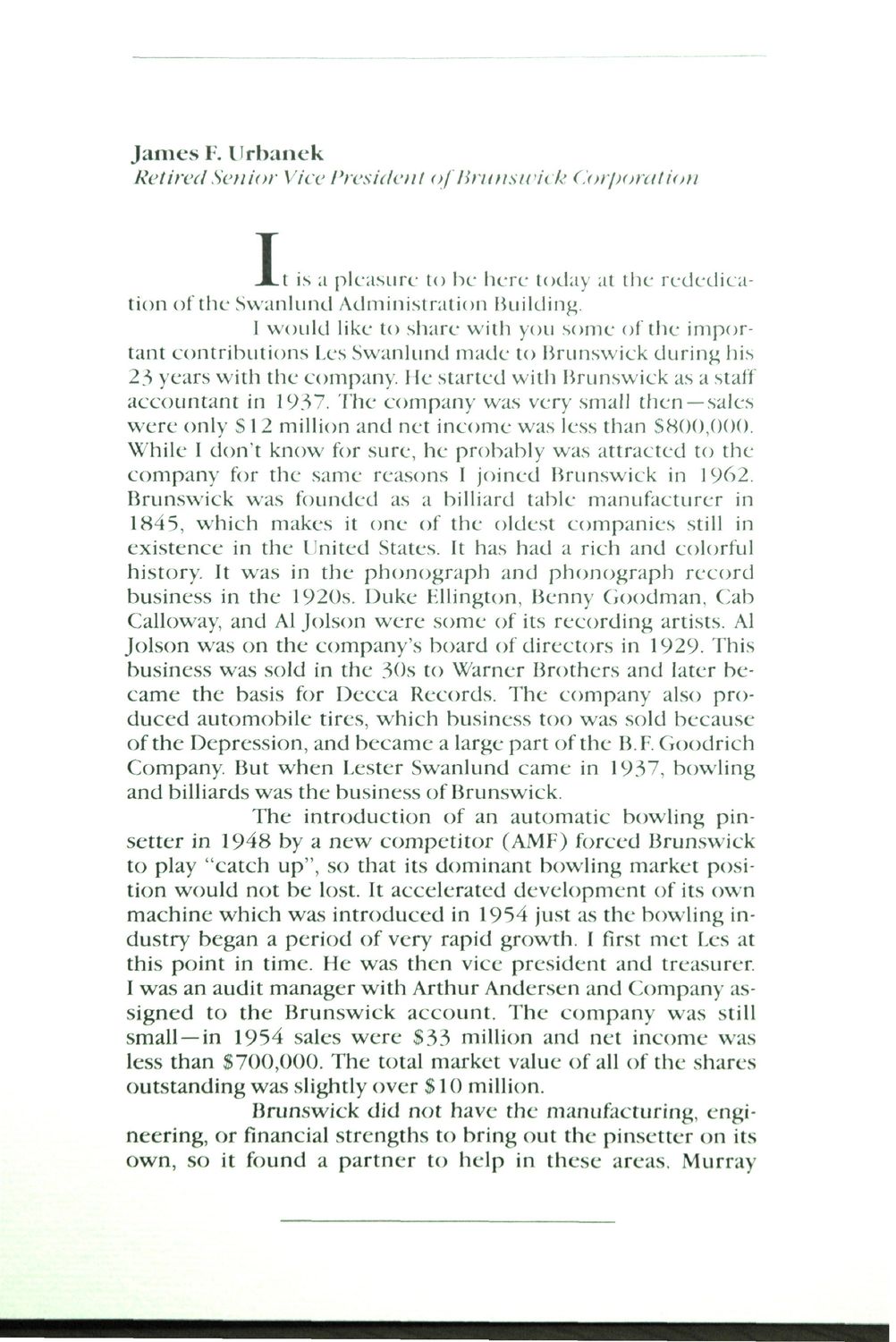| |
| |
Caption: Dedication - Swanlund Administration Building
This is a reduced-resolution page image for fast online browsing.

EXTRACTED TEXT FROM PAGE:
James F. Urbanek Retired Senior Vice President of Brunswick Corporation JLt is a pleasure to be here today at the rededi cation of the Swanlund Administration Building. I would like to share with you some of the important contributions Les Swanlund made to Brunswick during his 23 years with the company. He started with Brunswick as a staff accountant in 1937. The company was very small then—sales were only $ 12 million and net income was less than $800,000. While I don't know for sure, he probably was attracted to the company for the same reasons I joined Brunswick in 1962. Brunswick was founded as a billiard table manufacturer in 1845, which makes it one of the oldest companies still in existence in the United States. It has had a rich and colorful history. It was in the phonograph and phonograph record business in the 1920s. Duke Ellington, Benny Goodman, Cab Calloway, and Al Jolson were some of its recording artists. Al Jolson was on the company's board of directors in 1929- This business was sold in the 30s to Warner Brothers and later became the basis for Decca Records. The company also produced automobile tires, which business too was sold because of the Depression, and became a large part of the B.F. Goodrich Company. But when Lester Swanlund came in 1937, bowling and billiards was the business of Brunswick. The introduction of an automatic bowling pinsetter in 1948 by a new competitor (AMF) forced Brunswick to play "catch up", so that its dominant bowling market position would not be lost. It accelerated development of its own machine which was introduced in 1954 just as the bowling industry began a period of very rapid growth. I first met Les at this point in time. He was then vice president and treasurer. I was an audit manager with Arthur Andersen and Company assigned to the Brunswick account. The company was still small—in 1954 sales were $33 million and net income was less than $700,000. The total market value of all of the shares outstanding was slightly over $ 10 million. Brunswick did not have the manufacturing, engineering, or financial strengths to bring out the pinsetter on its own, so it found a partner to help in these areas. Murray
| |